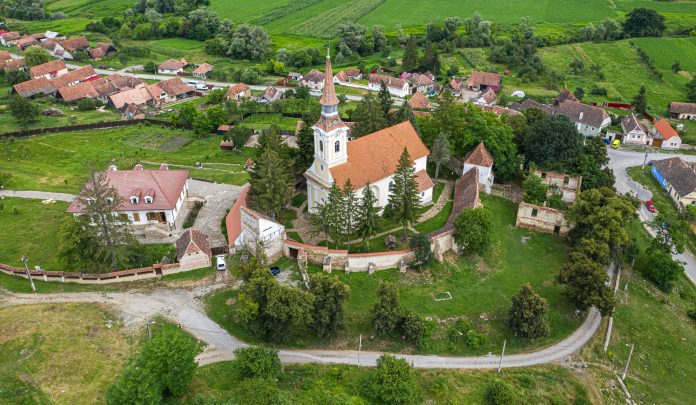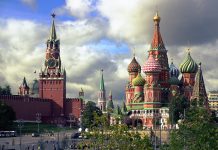The Haferland festival that celebrates traditions in Transylvania’s Saxon villages has moved online this year due to the Covid-19 pandemic which can make travel and large gatherings impossible in these strange times.
The festival, which has been running every year since 2012, usually starts in the last weekend of July and has gathered pace over the years.
It has tapped into renewed interest in the Transylvanian villages with their traditions, the slow pace of life, and houses that look like they’re from the Grimm brothers’ fairy tales.
„It is to me a very important festival in Romania,” British Ambassador to Romania, Andrew Noble, said in a video message on Sunday. „It charts the history and life and culture of a really dynamic part of Transylvania.”
BEGINNINGS
Michael Schmidt, the largest BMW dealer in the region and the region’s only Rolls Royce dealer, is the motor for the festival. He’s a native of the village of Criț (German name: Kreuzdorf), an idyllic hamlet of 676 souls east of Sighisoara which has a fortified church, designated a historic monument, complete with an organ. The parochial house on the hill next to the church has been turned into a boutique hotel Casa Kraus with stunning views over the valley.
The festival showcases the local heritage and revitalizes traditions, such as jam making, with dancing, music and beer thrown in.
COVID-19 RESPONSIBILITY
Only this year like much of our lives, it’s moved online.
Organizers posted pictures of the villages, and images from previous festivals. There was a video on how to make a Saxon sweet cheese pie, traditional dances and a recital from the Viscri choir. Emil Hurezeanu, Romania’s ambassador to Germany who normally attends the event, sent a video message.
The organizers said they were they had gone online in a “show of social responsibility to the community in Haferland and tourists from Romania and abroad as well as the companies involved in the festival.” Romanian football legend Gheorghe Hagi sent a message of support.
THE OATS
Haferland which means Oat Land or Tara Ovazului in Romanian lies between Rupea and Sighisoara and comprises seven villages: Archita, Viscri, Homorod, Saschiz, Rupea, Crit, Bunesti, Roadesi, Mesendorf and Cloastderf.
It got its name as locals grew oats which were suited to the harsh climate. Britain’s Prince Charles foundation is in the nearby village of Viscri.
The online event started Friday and ends Sunday and opens the curtains „to this corner of the country which has proved to be an ideal place to discover Saxon traditions in a dream-like landscape,” a statement said.
BAVARIAN PRIME MINISTER
It is being hosted under the patronage of Bavarian Prime Minister Markus Söder.
”I really wanted to continue the tradition….but we have a responsibility to the community and visitors … which is why it’s online,” Mr. Schmidt explained in a video message with his wife, Veronica who is the foundation’s vice president.
“Saxon villages have begun to come alive again in recent years and we have contributed to this change, and we now feel it is our duty to continue the tradition and we will make every effort for this to happen in very safe conditions,” he added.
Ambassador Noble said the Saxons „left a culture ….that is now being taken over and being made their own by the population of these wonderful villages.”
HAY AND DANCING
The Haferand festival is a mix of Saxons who moved abroad returning home, Romanian and foreign tourists, diplomats and residents.
Last year, festival goers watched Saxon dances, sat on bales of hay, shopped at craft fairs, listened to talks on the history of the area, and sampled local delicacies such as pickled mushrooms.
The organizers of the online edition are M&V Schmidt Foundation run by Mr. Schmidt and his wife, Veronica, the Tabaluga Foundation, the Mihai Eminescu Foundation, the Adept Foundation, the Saschiz Women’s Association, the Association of Transylvanian Saxons from Germany, the Nowero Rupea Assocation.
HISTORY OF THE SAXONS
During communism, more than 200,000 Saxons emigrated to Germany and others were forcibly relocated to towns under a scheme devised by Communist dictator Nicolae Ceausescu to urbanize the rural population.
Ceaușescu allowed thousands of Saxons to migrate in exchange for money he got from the West German government.
The Transylvanian Saxons first arrived in the 12thcentury from areas that today are part of Luxembourg, France and Belgium. Hungary’s King Geza II invited them to develop the local economy and to protect the outlying regions of the Hungarian Kingdom from invaders.
The Saxons gained a reputation for being resourceful and skilled craftspeople and farmers who had good relations with the local population.
More than 30 years after they emigrated, many return to their old homes and the villages especially in the summer months.
Prince Charles who has two houses in the area visits the place every year, although he skipped this year’s visit due to the pandemic.
The British ambassador saluted „the organizers of Haferland-Kulturwoche for sticking with it this year and I look forward to meeting up in Mălâncrav or Saschiz or Crit or many of the other wonderful places next year.”
Useful links: www.haferland.ro and www.fundatia-michael-schmidt.org



















